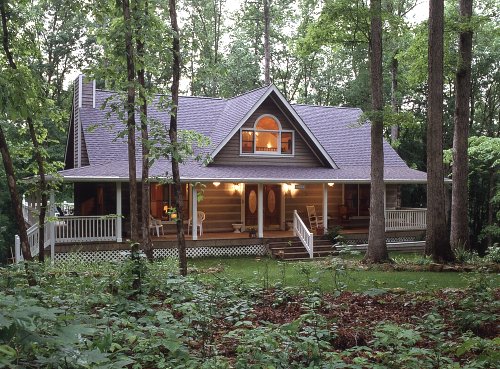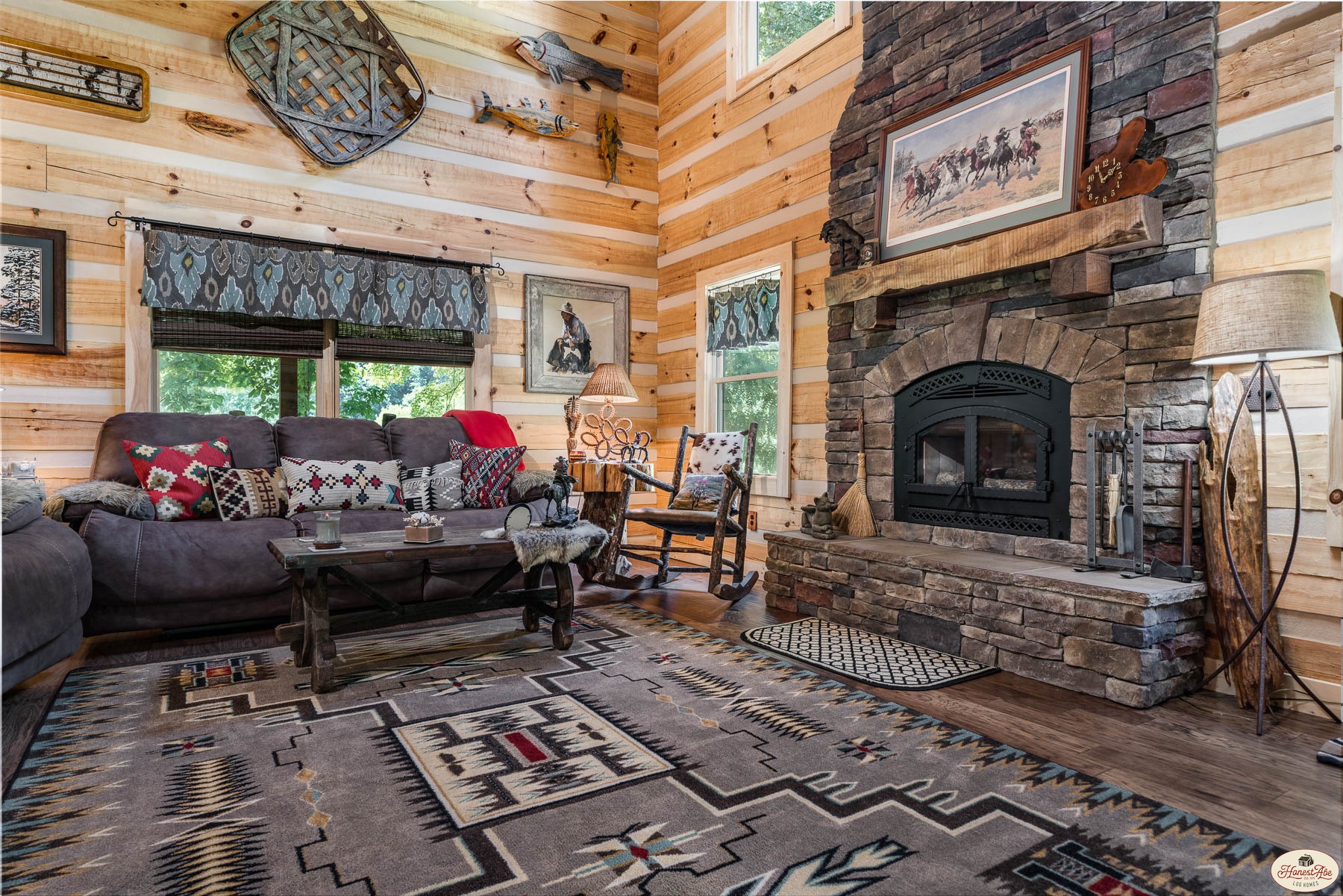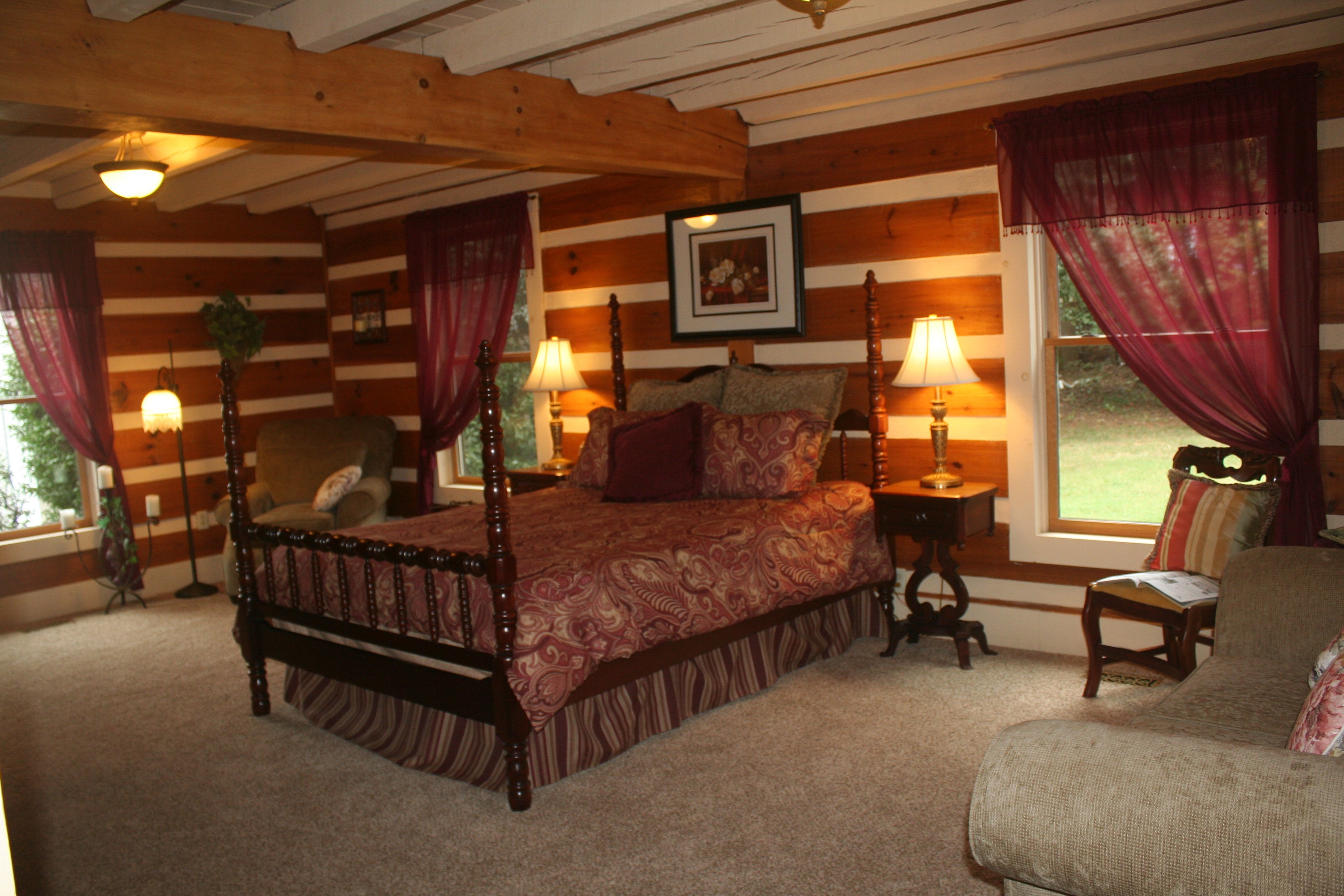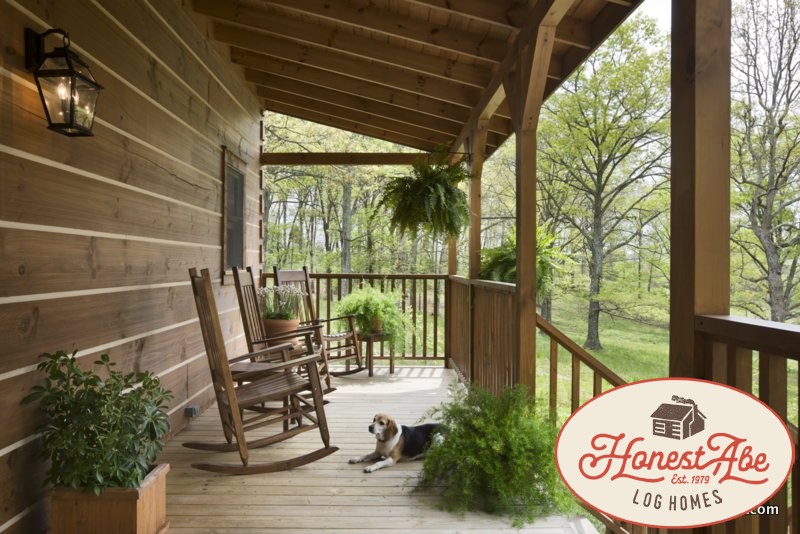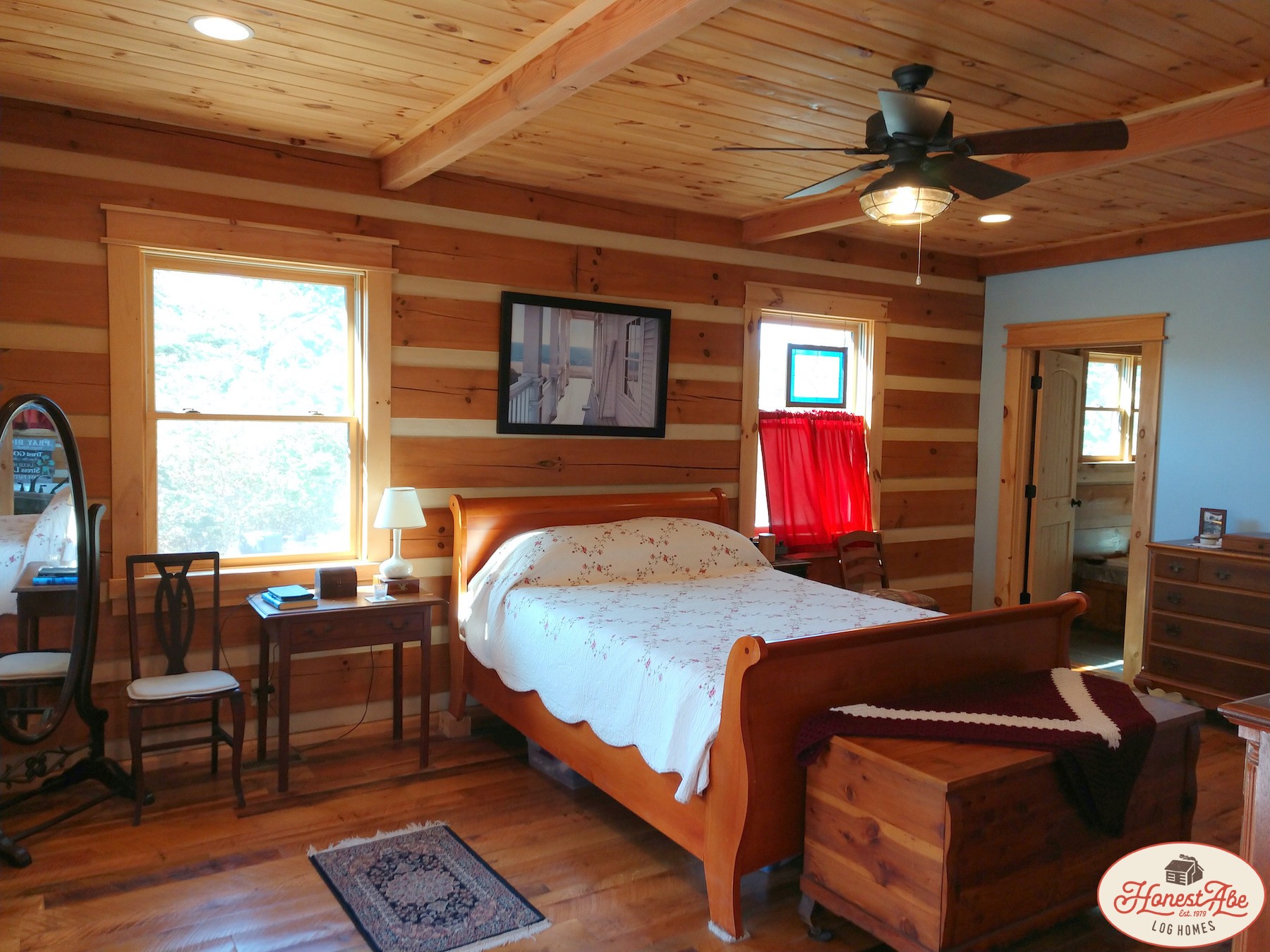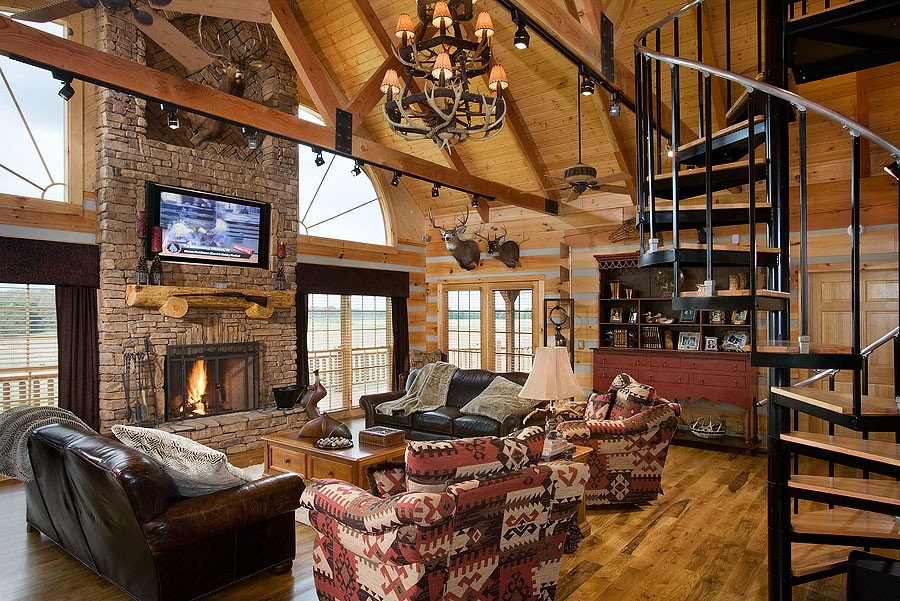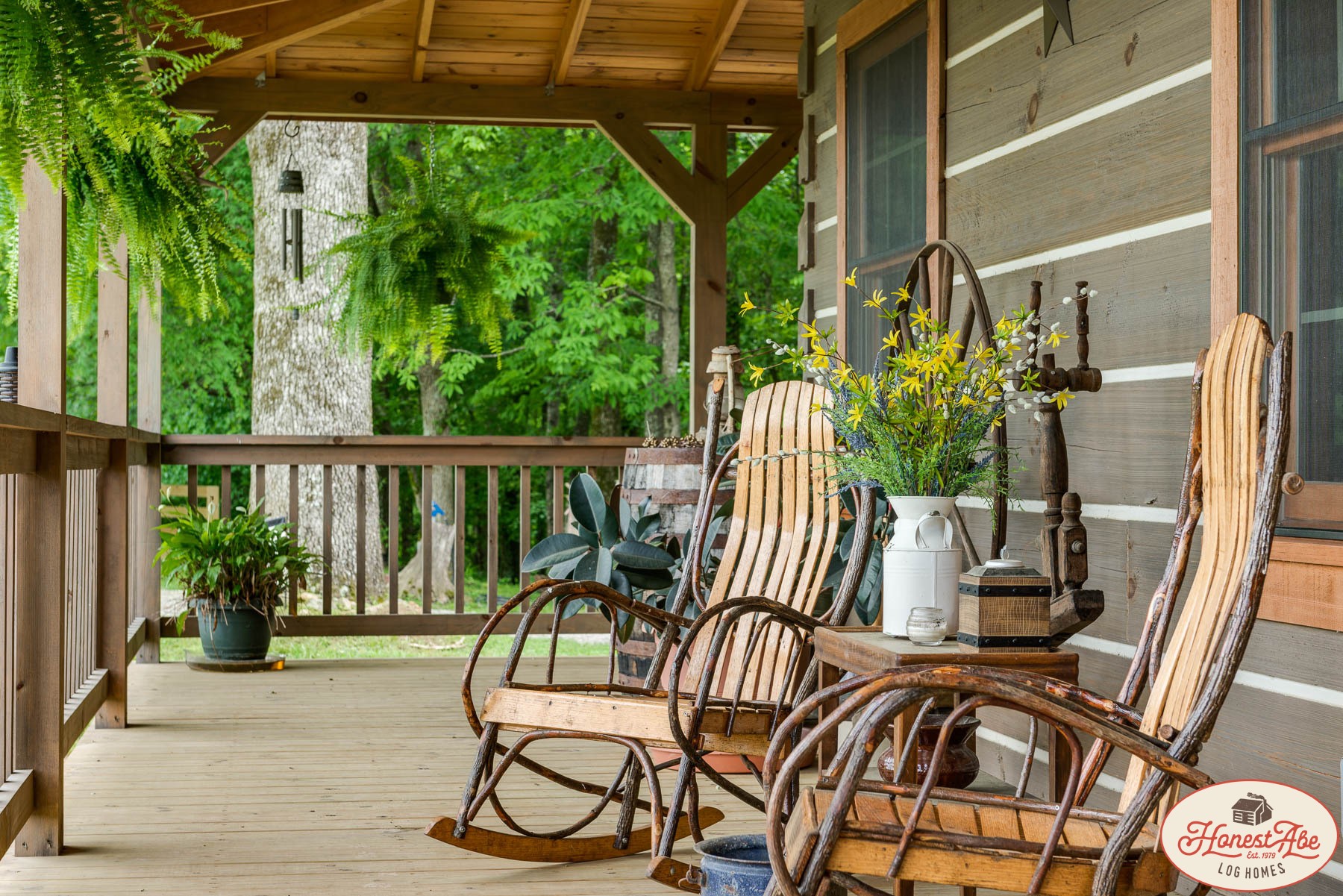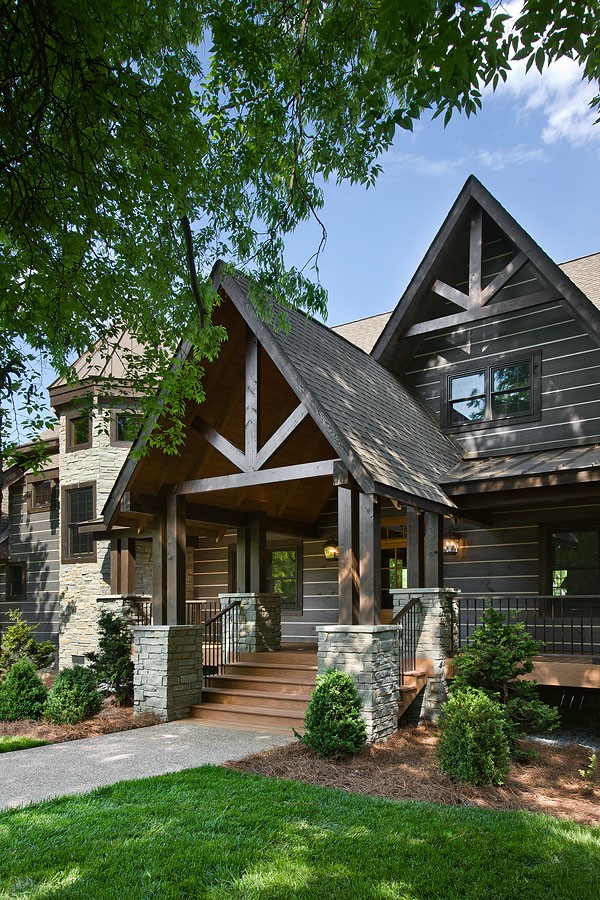What is log chinking?
In early history the process of chinking was the installation of various materials installed in horizontal voids between log courses on log walls to prevent air and water from entering the building.
Today the word chinking is a noun meaning the substance used to fill the voids as well as the verb referring to the action it takes to apply the chinking material.
Shown here are photos of Honest Abe customers’ homes that are chinked. Click on each photo to access a gallery of the home and to read more about the design
How did people start chinking their buildings?
As far back as log cabins go, there have been all sorts of attempts to seal out water and other undesirables. Wood slats were placed in between the logs at an angle, these slats were then covered with mud or a combination of mortar mixed with horsehair or whatever else could be found.
In the Northeast section of the USA oftentimes tree moss would be soaked in water and driven into any openings that it could be pounded into. Also in the Northeast, roofing tar or oakum would be used as chinking.
Most of these compounds worked for a little while, but they all lacked sufficient adhesion to wood as well flexibility. So when the logs moved, the products used to seal them did not, and the next summer or fall, everyone was out “chinking” the home in preparation for the next winter.
There were limited gains when mortar was used on some specific joint designs, but in time they developed stress cracks, and the nails used to help hold the mix during the installation rusted and allowed the cement to pull away and sometimes fall out.
Additionally, because the cement was so alkaline, horse or animal hair mixtures eventually dissolved the protein in the hair and left voids in the mortar allowing water and air back in.
How is it applied today?
Although there are many methods employed, it is usually the applicator’s choice of methods and tools to make it the most efficient for them.
For example, Perma-Chink can be applied right out of the pail using inexpensive tools that can be purchased from Perma-Chink along with necessary backer materials. The most popular combination for homeowners and contractors alike is the Cox Bulk Loading Gun and Cox Follow Plate, this combo evenly removed the chinking from its five-gallon pail and offers tip size options cut to fit for any type project’s specific needs. Watch this video to see how it’s done.
Once the proper amount of material has been placed in the joint area, it is then smoothed out with a trowel to remove any unwanted air and to insure a good seal against the log surfaces.
Once the initial “tooling” has been accomplished, the surface is then lightly misted with water and the final smoothing of the material is done to achieve the desired finish or appearance. The final appearance can be either smooth or rough depending on the preference of the installer.
What if older chinking needs repairs?
When Perma-Chink is properly installed, there are usually no repairs needed unless it is becomes damaged. The hard part is keeping people from trying to “feel” it before it cures, which results in indentations or fingerprints.
If repairs are needed, small separations can easily be repaired by applying a small bead of chinking into the damaged area and smoothing it out with a small brush and water. Most chinking issues are the result of improper application of trying to make too little go too far. Reading the directions prior to application and following them carefully will help avoid repairs.
Can chinking be stained?
The answer is yes, but it will not take the color as the wood does, so the results may be undesirable. Perma-Chink manufactures Chink Paint to change the color of the chinking if so desired. Chink Paint uses same raw materials as the chinking, so they are completely compatible with each other.
How does chinking react to the natural shrinking of the log walls?
Perma-Chink is formulated to work in conjunction with anticipated log movement when properly installed at the correct thickness, over the recommended backer material across the face of the joint.
Perma-Chink is formulated to have as high as 275% elongation, which is much more than any log can move. Also today’s manufactured log homes have less movement than in the past, yet there is some minor movement associated with climatic changes in all structures.
This article is supplied by Perma-Chink, a 40-year-old company whose products are included in each Honest Abe Log Home package. For more information about their products, visit permachink.com.![]()


